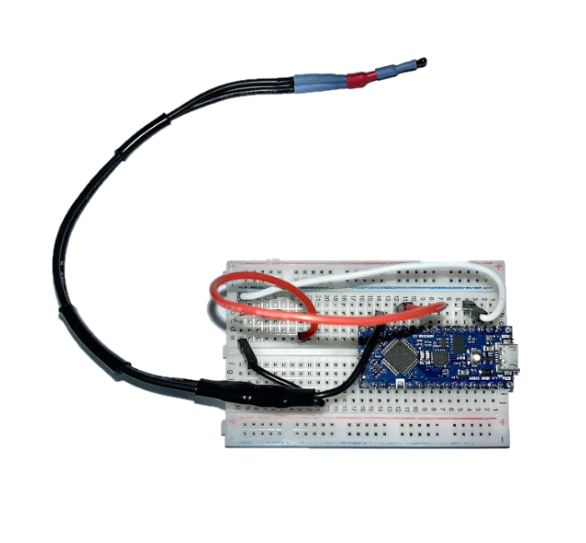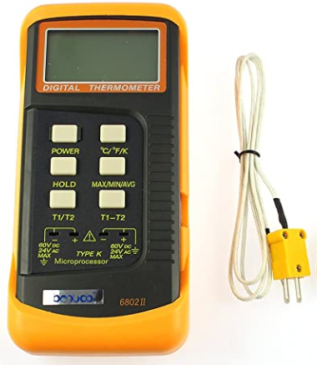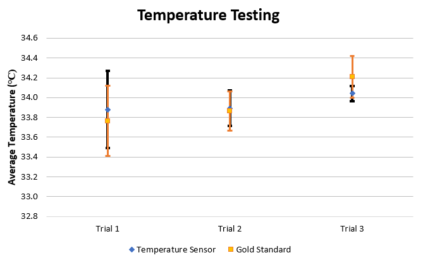Body Temperature Sensor - H.A.L.O. Mk. 1

Some pilots, such as military and aereal firefighters, are required to wear a flight suit. These suits are made of materials that are designed to be flame resistant which leads to poor air circulation and the potential for hyperthermia. To monitor this, a body temperature sensor will measure the peripheral temperature of the pilot. In conjunction with the skin conductivity sensor, the body temperature sensor can aid in distinguishing heat stroke from heat exhaustion which is crucial to determine if the pilot is in danger.
The body temperature sensor consists of a 10KΩ NTC thermistor. Using a voltage divider circuit, an Arduino processor is used to record the voltage across the thermistor and translate this into the pilot’s peripheral body temperature. The prototyped temperature sensor can be viewed to left.
To test the device, the body temperature sensor was mounted to a headband and placed on the forehead. A 6802II Digital Thermometer was employed as the gold standard for comparison and was also placed on the user’s forehead during each test. Temperature readings were recorded every minute for 20 minutes, and the system was tested on three different people. The temperature testing setup and gold standard digital thermometer can be seen to the right.



As seen in the graph to the left, the data points between the body temperature sensor and gold standard were nearly identical. The standard deviation bars included on the graph indicate the device produced a more precise data set than the gold standard for every trial. After conducting all three trials, it was calculated that the average standard error for the body temperature was an incredibly low 0.10%. Statistical analysis using a t-Test assuming unequal variances proved there was no difference between the body temperature sensor data and the gold standard data with a 95% confidence level.
